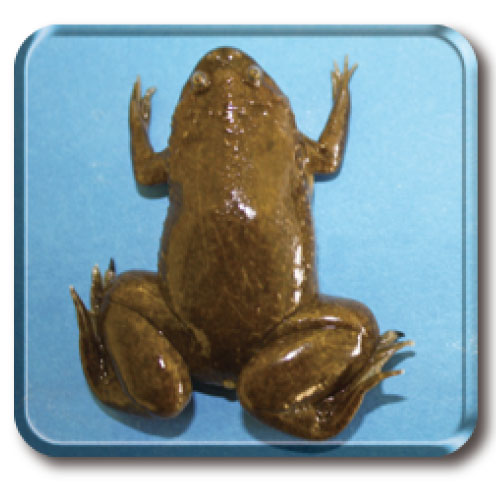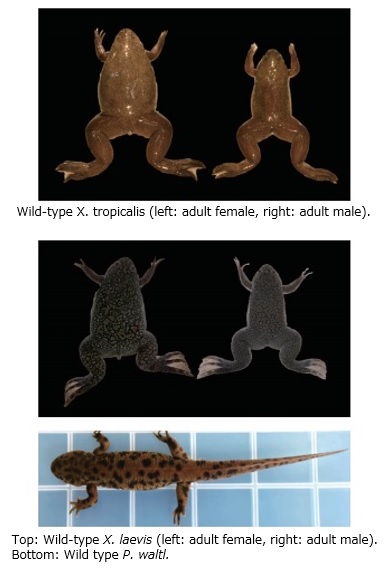

- Core Center:Amphibian Research Center, Hiroshima University
- Principal Investigator:Hajime Ogino
- FAX:+81-82-424-0739
- Sub-Core Center 1:Faculty of Education and Integrated Arts and Sciences, Waseda University
- Sub-Core Center 2:Graduate School of Science and Faculty of Science, Kobe University
概要Overview
 The short generation time of clawed frogs and newts makes them suitable for a variety of biological studies. Xenopus tropicalis has a generation time of 4-6 months, making it suitable for genetic studies. Although Xenopus laevis has a slightly longer generation time (1-2 years), it is suitable for developmental biology studies due to the ease with which embryos can be manipulated. Whole genome sequencing information is available for both species. Finally, Pleurodeles waltl has a short generation time similar to that of Xenopus tropicalis, and is especially suitable for regeneration studies.
The short generation time of clawed frogs and newts makes them suitable for a variety of biological studies. Xenopus tropicalis has a generation time of 4-6 months, making it suitable for genetic studies. Although Xenopus laevis has a slightly longer generation time (1-2 years), it is suitable for developmental biology studies due to the ease with which embryos can be manipulated. Whole genome sequencing information is available for both species. Finally, Pleurodeles waltl has a short generation time similar to that of Xenopus tropicalis, and is especially suitable for regeneration studies.
Stock
・X. tropicalis (inbred, transgenic or mutant): about 90 strains/lines
・X. laevis (“): about 10 strains/lines
・P. waltl (“): about 10 strains/lines
・Genomic DNA, cDNA clones, in situ hybridization kits,CRISPR/Cas9-positive control kits: about 500 samples/clones/kits
Subjects in the NBRP programs related to “Clawed frogs & Newts”
【 Value addition subprogram/Genome Information Upgrading Program 】
| FY2024 | ネッタイツメガエルを基軸とした両生類リソースの収集・保存・提供 (in Japanese) |
| FY2022-FY2023 | ネッタイツメガエル近交系の遺伝子発現プロファイルの整備 (in Japanese) |
| FY2018 | Generation of the genome polymorphism data of Xenopus tropicalis inbred strains (in Japanese) |
| FY2002-FY2003 | Genome Information Upgrading Program : FY2002-FY2006 |
【 Technology development subprogram/Fundamental Technology Upgrading Program 】
| FY2016 | Development of easy protocols for efficient gene knock-in using genome editing technology (in Japanese) |

